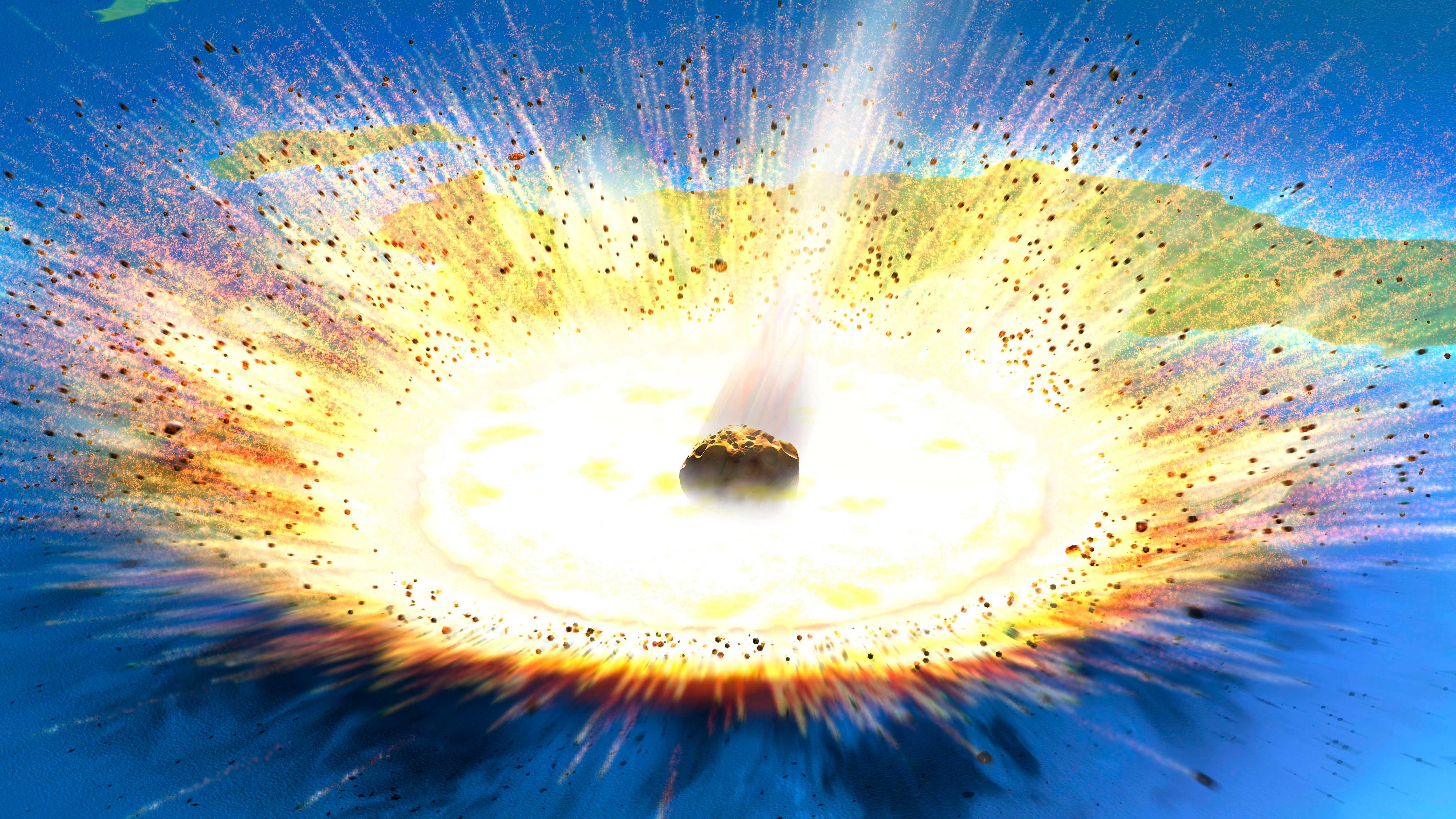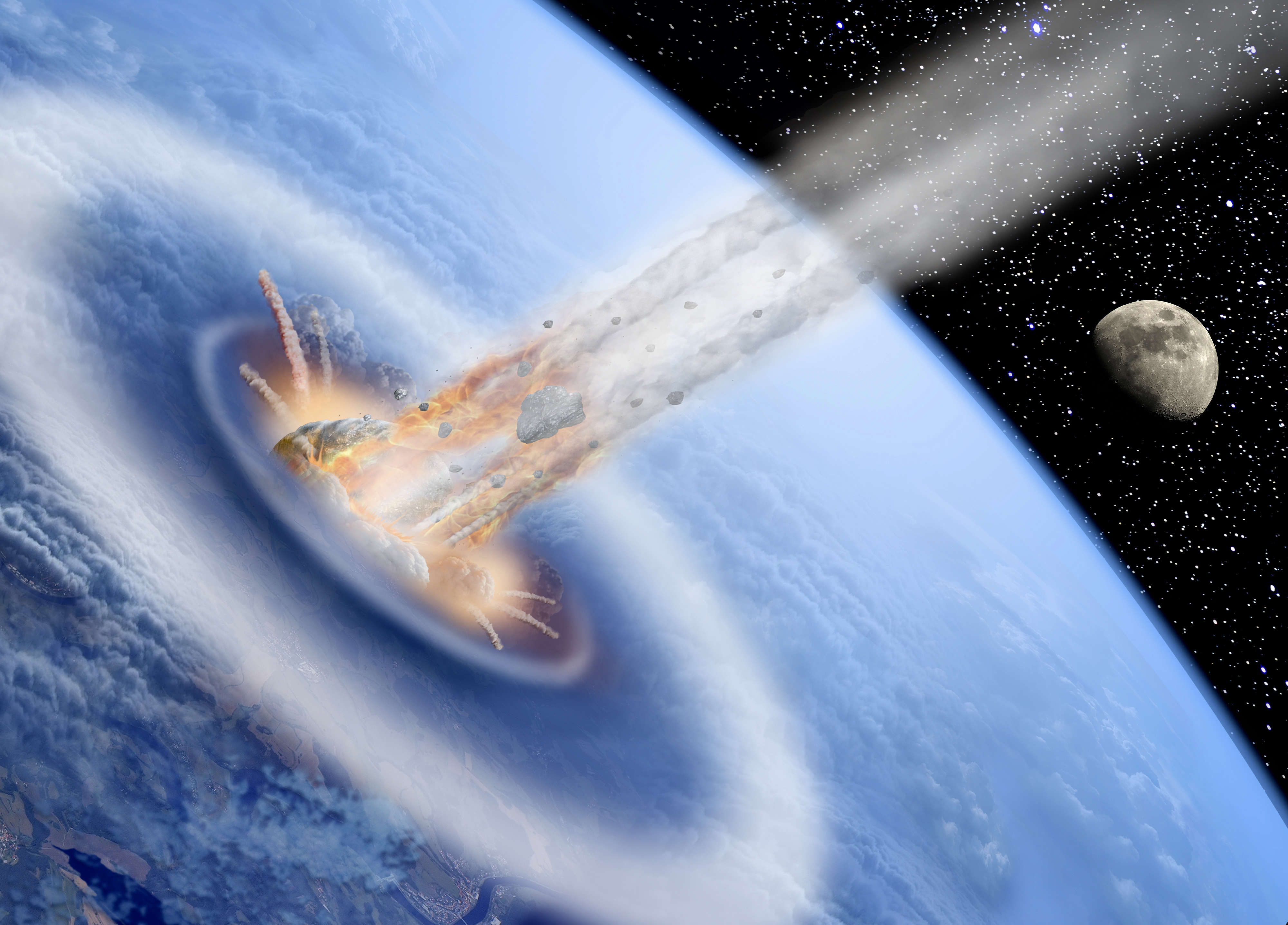Create a free profile to get unlimited access to exclusive videos, sweepstakes, and more!
Second mega space rock landed in the Ukraine 650,000 years after dino-killing strike

Blazing out of the primeval sky to eradicate the dinosaurs 66 million years ago, a 6.2-mile wide, extinction-level asteroid collided with Earth near the tiny town of Chicxulub in modern-day Mexico. This cataclysmic event marked the end of the Cretaceous period and caused the elimination of most existing non-avian dinosaurs and 75% of all life on the planet.
A second, lesser-known space rock that landed in the Ukraine called the Boltysh Impact was originally thought to have occurred several thousand years prior to Chicxulub, and the cause and effect of both asteroids together on the climate has been debated for decades. Now, a new research paper published in the online journal Science Advances reports that the Boltysh event happened 650,000 years AFTER the Cretaceous mass extinction, when our world was still recovering from the devastation enacted by the Chicxulub impact and extreme Deccan Traps volcanism.
This Boltysh Impact site measures roughly 15 miles in diameter and exhibits a 3.7-mile diameter central uplift. It can be found in Kivorohrads’ka oblast in the Ukraine, where the structure is now buried underneath more than 1,640 feet of post-impact material.
Despite the overwhelming evidence that the first killer space rock was the true death blow, many questions about the Boltysh asteroid remained, like exactly what the true timeline was.
“The results allow us to place the Boltysh impact more accurately in our timeline of what happened to the Earth in the period after the end-Cretaceous mass extinction event, and better understand our deep geological history,” Dr. Annemarie Pickersgill, a researcher in the School of Geographical and Earth Sciences at the University of Glasgow, said in an official statement.
Dr. Pickersgill and colleagues nailed down a more accurate assessment by selecting four samples drawn from rock cores obtained from the Boltysh crater. These specimens contained rocks produced during the actual impact event and additional lake sediments that had built up over time once the crater was created.
According to the study, argon-argon dating was employed to measure the radioactive decay of potassium to argon. This measurement works well as a "rock clock," ticking down the ages over vast spans of geological time, allowing researchers today to identify when the rocks were created.
“Our analysis suggests that the impact occurred very close to 65.39 million years ago,” Dr. Pickersgill added. “That puts it firmly after the Chicxulub impact and the formation of the Cretaceous-Paleogene boundary, evidence for which is found in geological records around the world.”
During that monumental chunk of time, massive volcanoes in India called the Deccan Traps were spewing prodigious amounts of greenhouse gases into Earth’s atmosphere, thereby quickly accelerating a period of extreme global climate transformation.
“Paleoclimatology aims to help us understand and adapt to today’s changing climate by studying how our atmosphere responded to environmental stresses in the past,” Dr. Pickersgill noted. “Being able to link the Boltysh lake sediments to the lower C29N hyperthermal is another piece of the jigsaw which will form a clearer picture of how our planet has responded to climate change in the past.”



























